Warning: Undefined variable $k in /home/nginx/domains/wired2fishcom.bigscoots-staging.com/public/wp-content/themes/understrap-child-0.6.0/functions.php on line 984
Warning: Undefined variable $k in /home/nginx/domains/wired2fishcom.bigscoots-staging.com/public/wp-content/themes/understrap-child-0.6.0/functions.php on line 987
The early prespawn bass fishing period all the way through the spawn is the best time of year to catch a giant bass. It’s also one of the best times of year to find multiple quality fish grouped up in schools. With so much potential in the water, every decision becomes that much more critical in order to maximize the opportunities at hand.
One area of importance is that of color selection. There are literally hundreds of different color variations to choose from and this can be a little overwhelming. So, we thought we’d help you make the most of the prespawn bite by offering up some color recommendations.
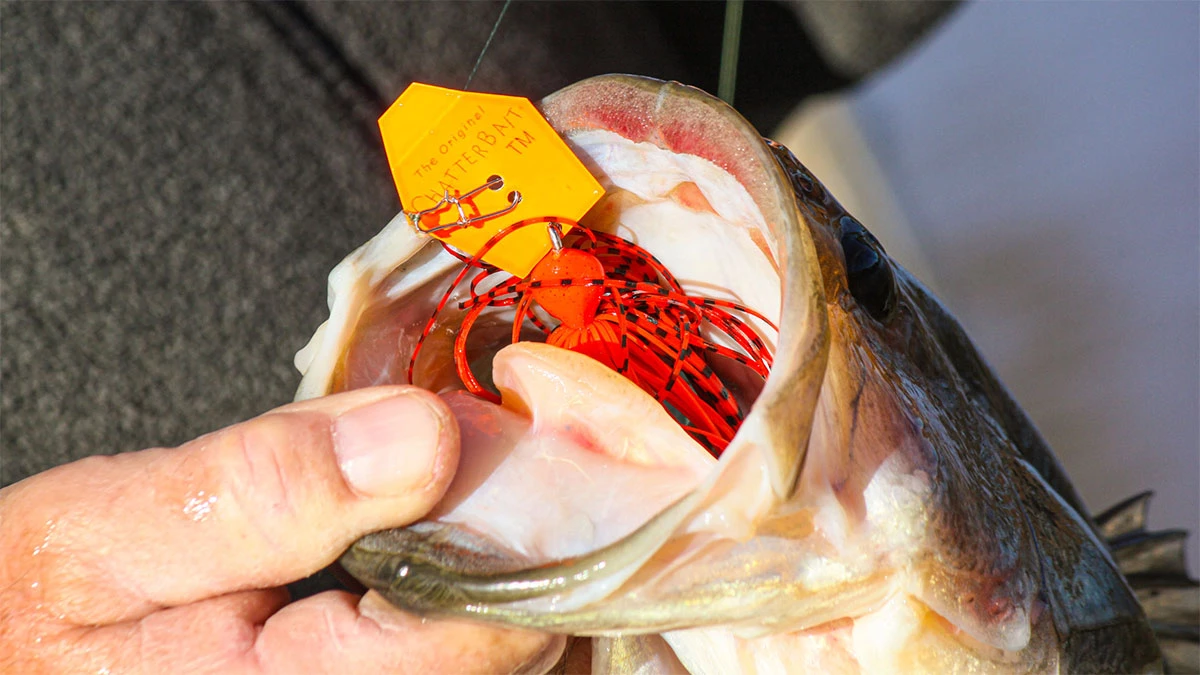
Red
Red is the most common color associated with the early spring bite, lumping in baits that may be a little more on the orange side into this category as well. There’s some debate that this phenomena is based on crawfish colors in the spring. But with hundreds of species of crawfish in existence and not all of the species having the same color in the same season, it’s likely that this isn’t the only reason red and orange work well.
Irregardless of the why, the simple fact is that these color baits produce big bites in the early spring. From red crankbaits and lipless crankbaits in clear water, to bright-orange spinnerbait blades and vibrating jigs in muddy water, all the way down to the the tiniest details of a few strands of orange in a jig skirt, this section of the color spectrum makes a big difference in the early prespawn.
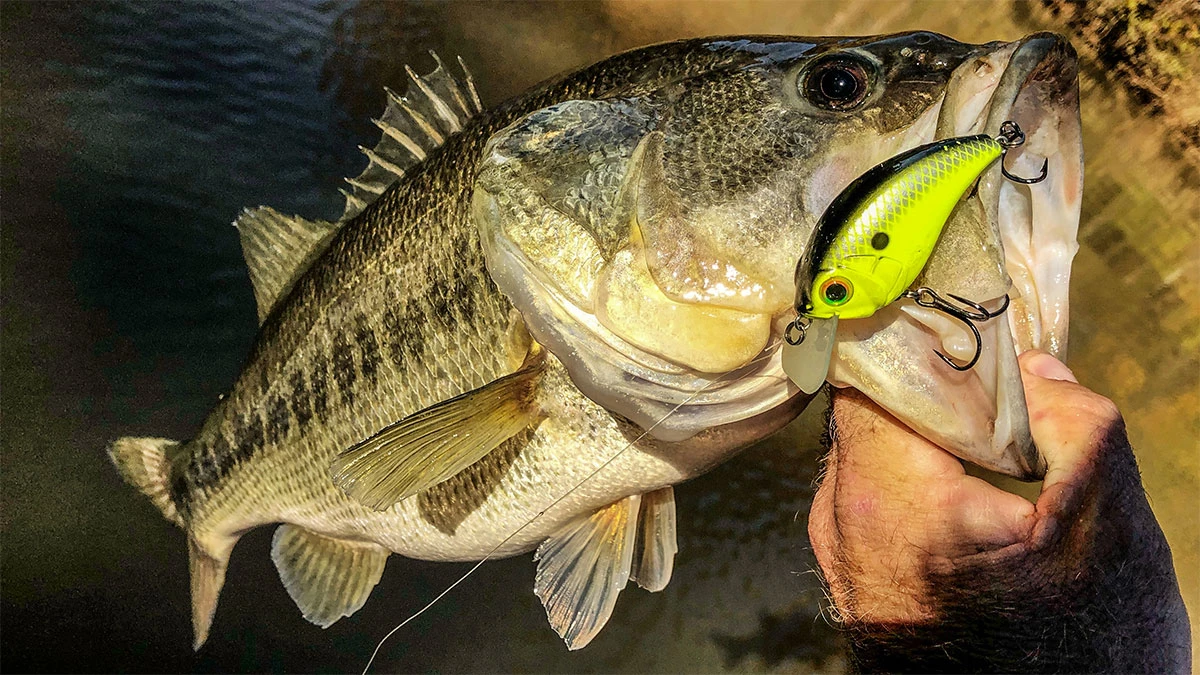
Chartreuse and black back
A bait like a chartreuse and black back squarebill crankbait works well in the early prespawn. And though this color combination is extremely effective, especially in particularly stained water, it’s more of an example of a principle that’s at work as opposed to an exact color combination you have to stick with.
A two-toned bait with vastly contrasting colors that has some top-to-bottom flash catches the eye of a bass. This is why a chartreuse and black crankbait works well; as it rocks back and forth, the dark back and bright sides flash. The same concept is what makes a jerkbait with a black back and silver sides work well, or a black back and gold-sided lipless. This flash created by the contradicting colors attracts bass, especially in the prespawn.
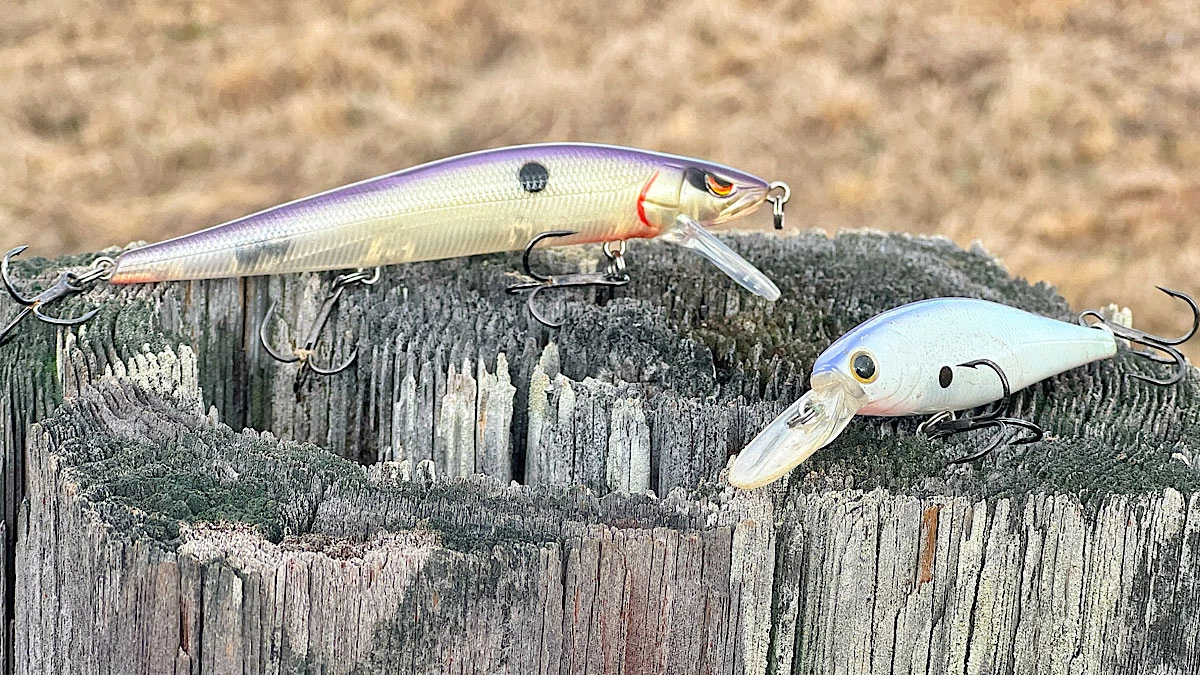
Table Rock
A bass fishing jerkbait is one of the most effective baits in the early prespawn and the Table Rock color is likely the most effective jerkbait color across the widest range of conditions during the late winter to early spring window. Sure, on a cloudy day a silver-sided jerkbait may work a little better, or perhaps a translucent color could be a little more productive on a clear and sunny day.
But by and large the best color jerkbait on average to throw in muddy water or clear, on sunny days or cloudy, in wind or calm and around any type of bait fish or cover is Table Rock. It’s again not as important why this is the case, as it is to accept that this is the case. So it’s a good idea to keep a Table Rock-colored jerkbait on deck in the prespawn.
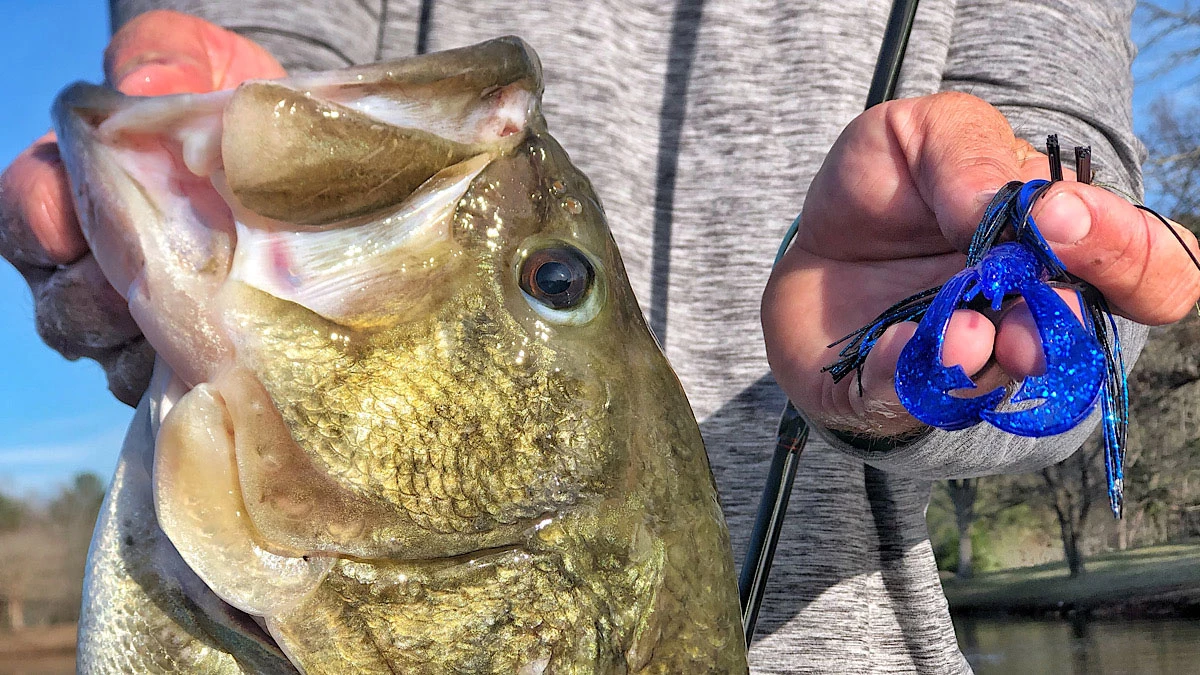
Something dark
I’m being a little vague here on purpose to illustrate a point. The same way chartreuse and black was an example of a broader principle at work, various dark colors work well in the prespawn. Worms and jigs that are black, brown, green pumpkin, PB&J or some other predominately dark color are all effective in clear to stained and even muddy water in the prespawn.
In the early prespawn, the water is bitterly cold. This can make cold-blooded bass very lethargic or inactive. So flipping, pitching and dragging slow-moving baits like worms and jigs are particularly effective ways to get bit. Darker colors are good imitators of several different food sources that a bass might find crawling around on the bottom.
Since the slow-to-respond bass are getting a good look at these baits, picking a natural color is very important. Don’t be scared to pick a bait with a few hints of brightness, like blue or orange strands in a jig skirt or gold flake in a worm, but the bait color as a whole should be predominantly dark for these bottom-dwelling, slow-moving baits.
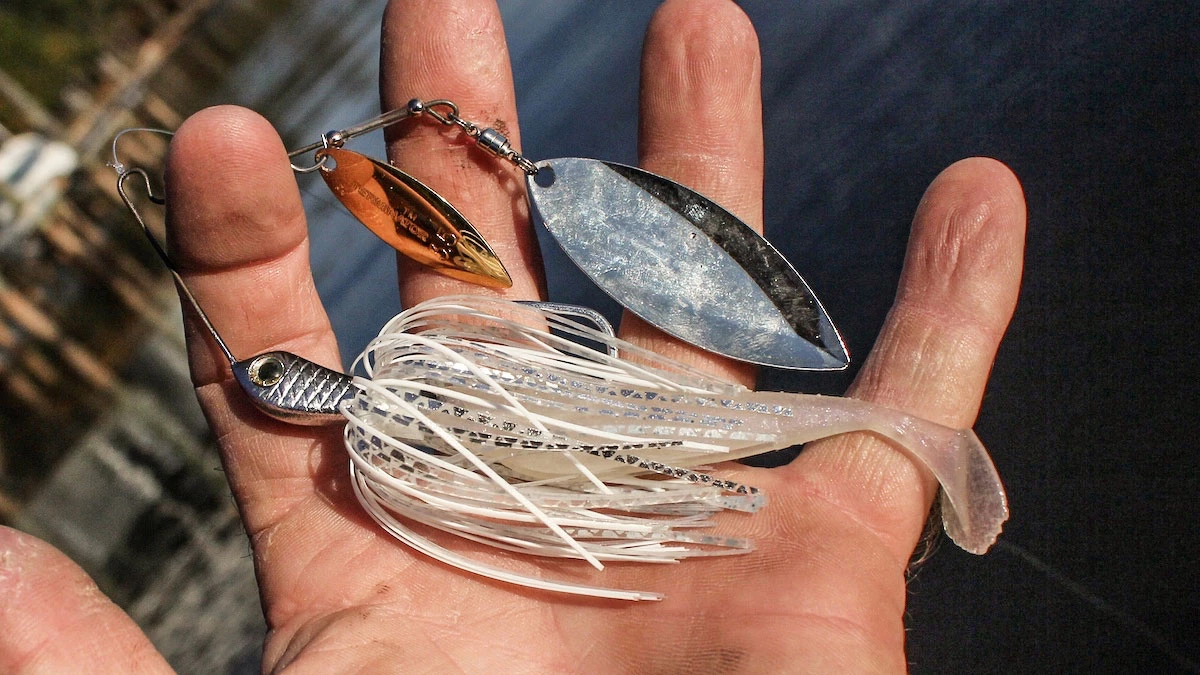
Something bright
This color recommendation is again based on a broader principle as opposed to one specific color. It’s a good idea to pick a bright-colored bait if your lure is on the move, in both clear water and in muddy water. Bright colors like white, chartreuse, pink and orange all work well as skirts and trailers on spinnerbaits, swim jigs and vibrating jigs.
This same principle supports the use of silver, gold, orange, white and chartreuse blades on spinnerbaits and vibrating jigs. You’re mainly looking to attract as much attention to the bait as possible to coerce a bite out of the typically less active bass in the area.
Using these simple guidelines will help you narrow your color selection down from hundreds of options into a handful of baits. Red is almost always a good bet during the early pre-spawn, as is a Table Rock-colored jerkbait. Something with a two-tone flash works well, too.
Remember to use dark colors with your slow-moving baits and select brighter colors if your bait will be on the move. Take these five recommendations, apply them to your fishing and it should make for some great bass fishing during this prespawn bass fishing season.












